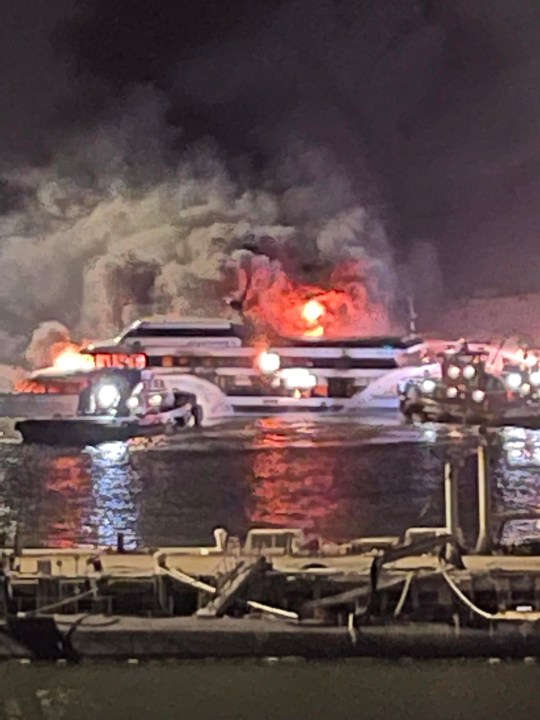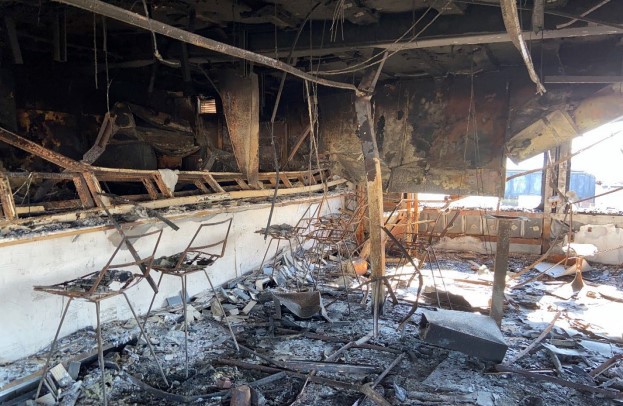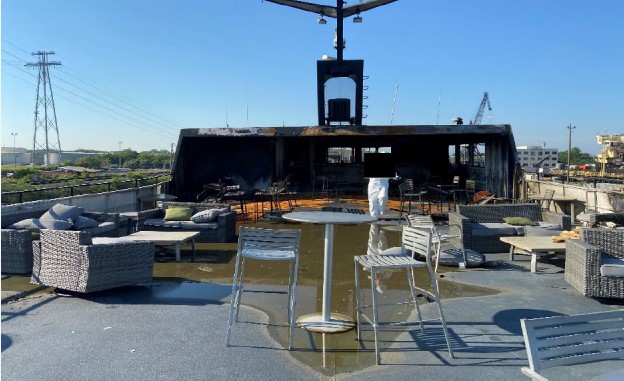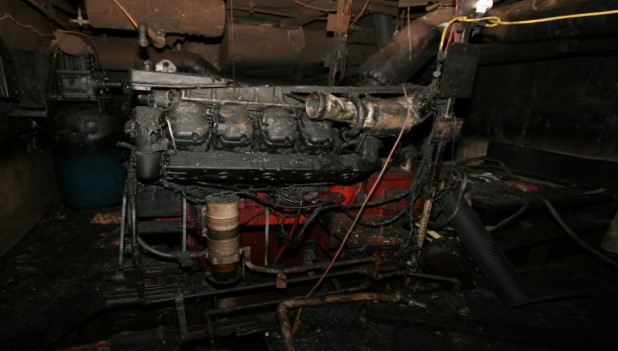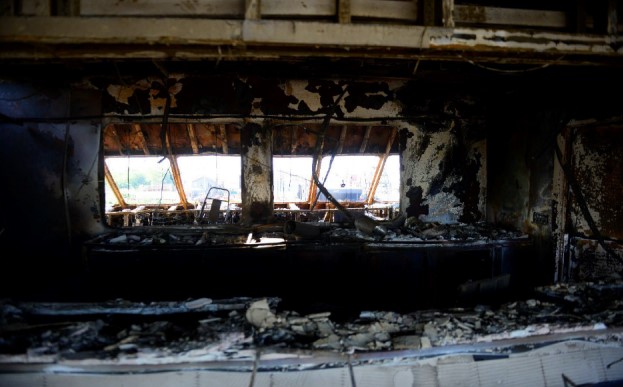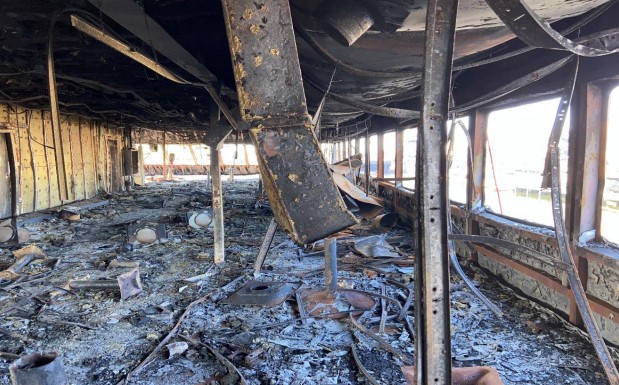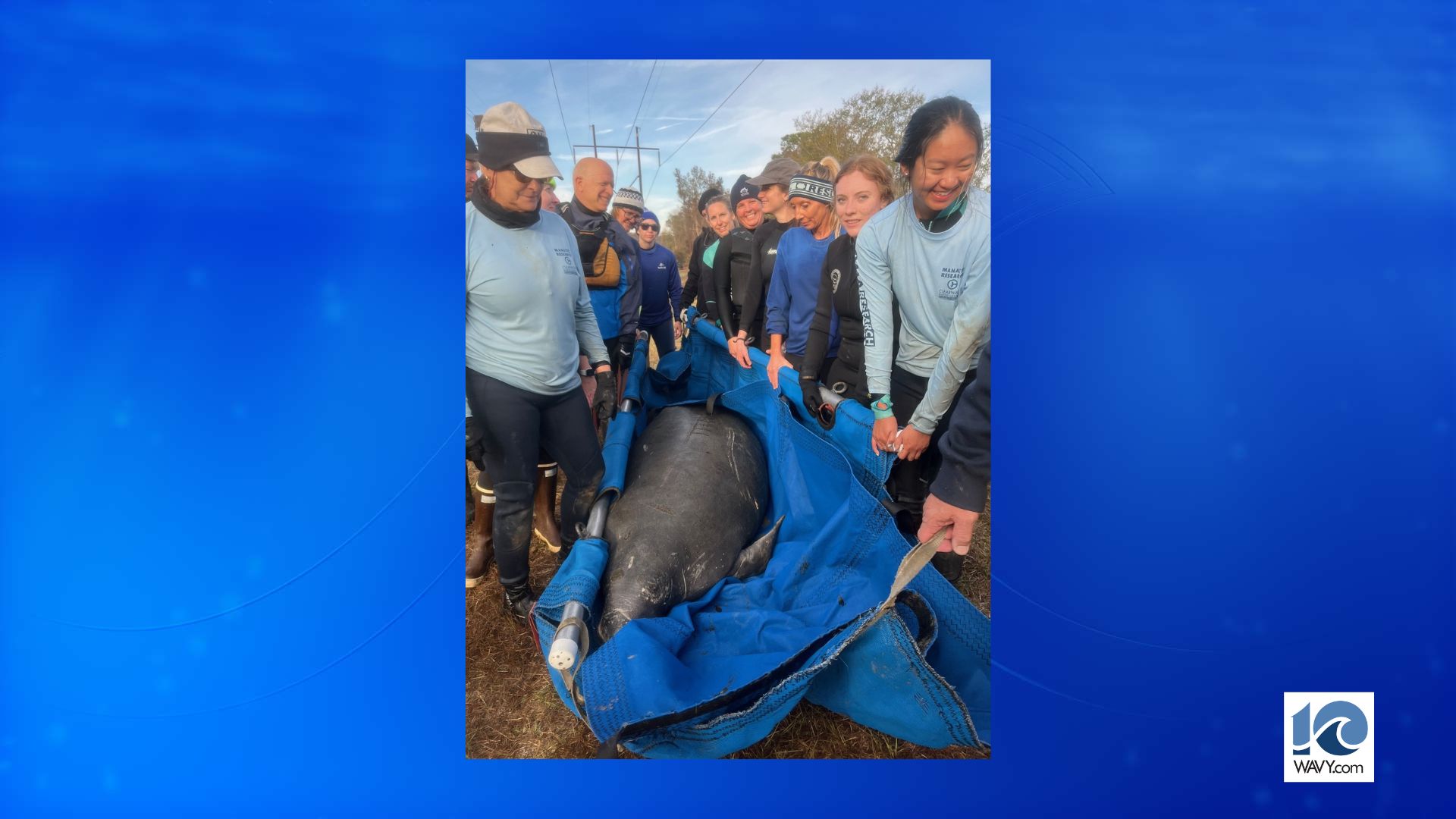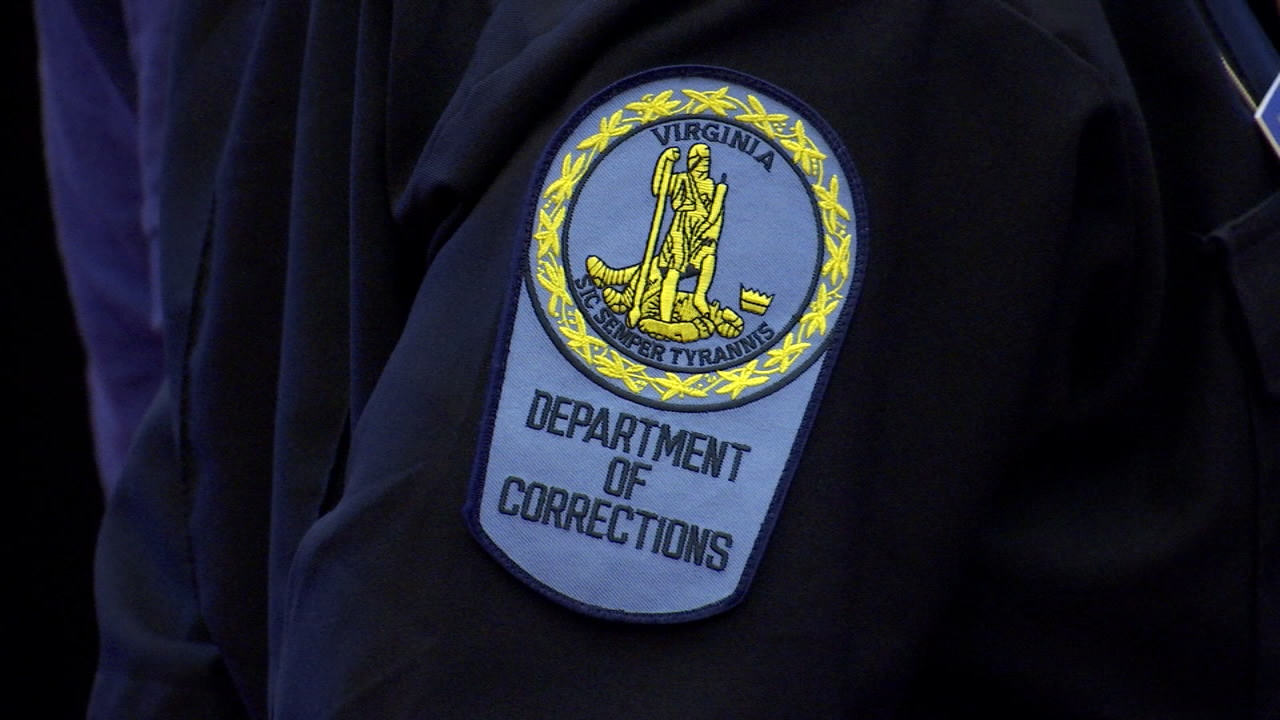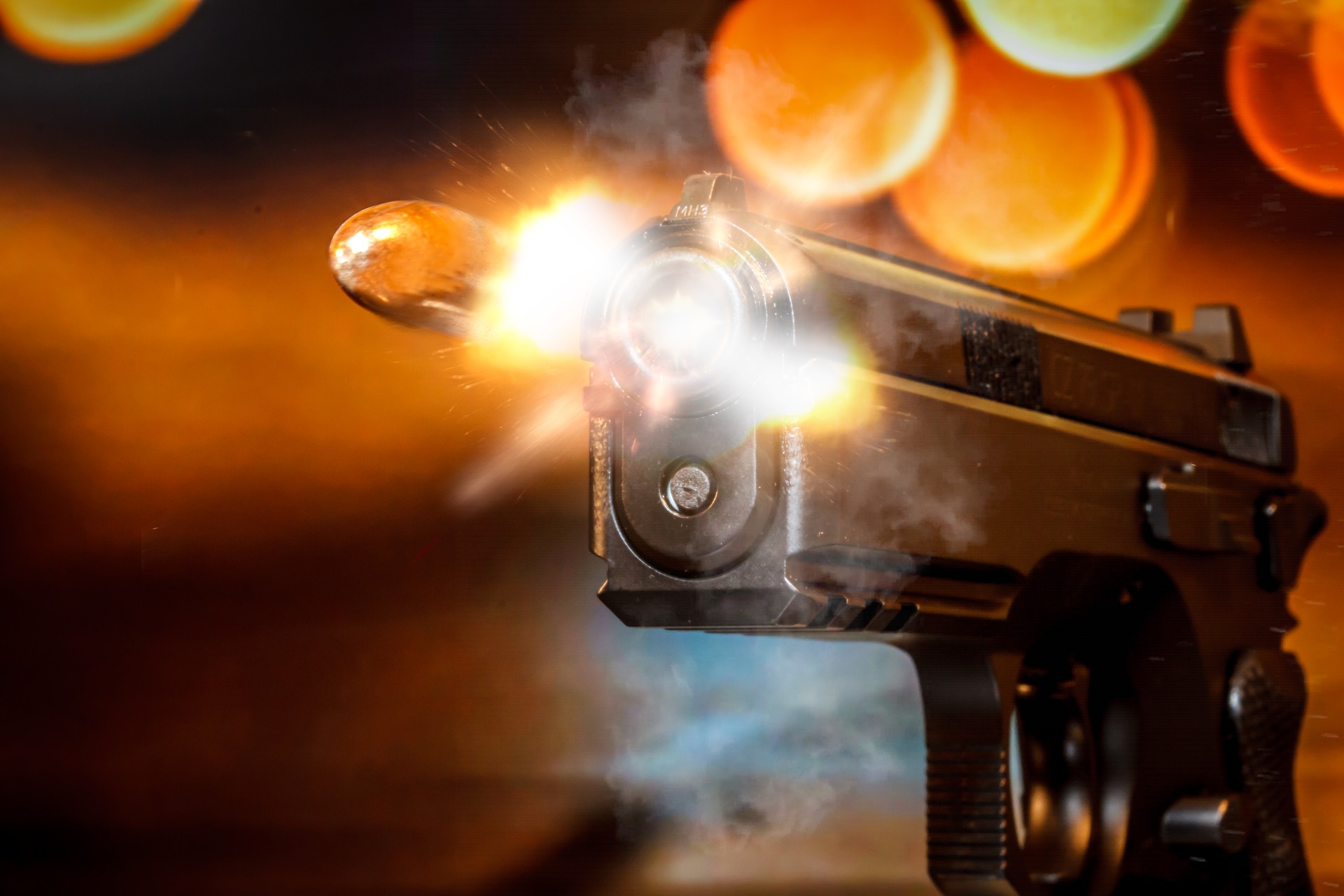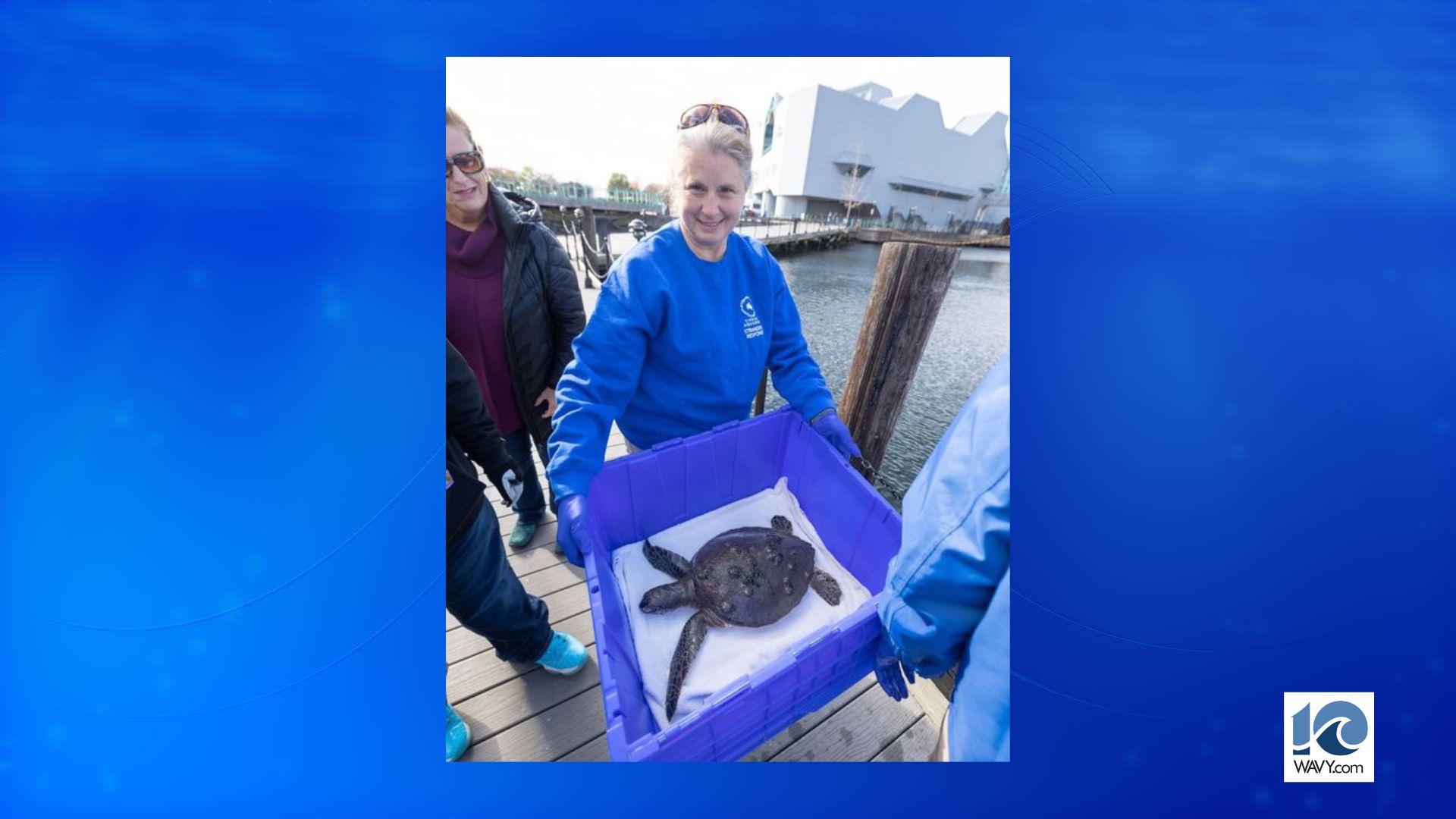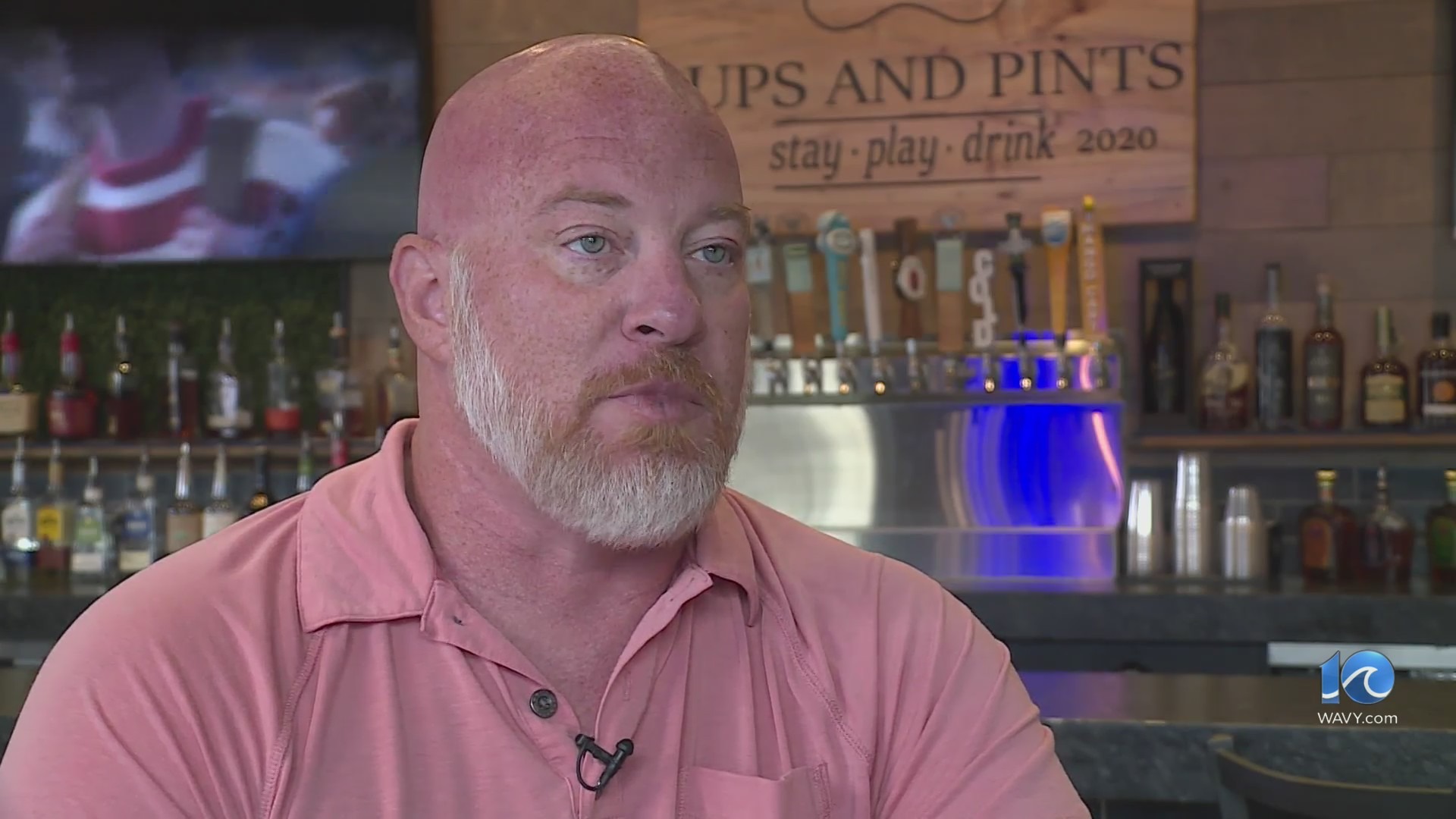VIRGINIA BEACH, Va. (WAVY) – Nearly eight months after the Spirit of Norfolk harbor cruise boat was gutted by a fire, it’s been revealed its charred shell could still go on serving.
Instead of serving human life however, it would serve marine life.
Last week, during testimony as part of a joint investigative hearing with the United States Coast Guard and the National Transportation Safety Board, Scott Smith, the senior vice president for the Hornblower Group, said the vessel is considered a total loss. Hornblower is the parent company of City Cruises, which operates two vessels out of downtown Norfolk.
“We had the vessel here at Colonna’s Shipyard in Norfolk up until the beginning of January for the preservation of evidence and to allow the investigative team to go onboard,” Smith said. “Right now the vessel is currently in a shipyard across the river preparing to either be scrapped or reefed.”
That shipyard it’s been towed to is owned by Tim Mullane of the American Marine Group. Mullane has made a business out of taking no-longer-seaworthy vessels and sinking them for artificial reefs.
He thinks the 1992 three-deck 167-foot Service Marine dinner boat would make a great addition to the sea floor.
“Having been built post 1986, we don’t even have to test for asbestos or PCBs, so it’s cleaning up the mess and going through a normal protocol, following the best management practices for preparing a vessel for use as an artificial reef,” Mullane said. “So far I’ve reefed 114 ships, and when Spirit is prepared, it will make a great reef . There’s very little chance it will be scrapped.”
Several states along the East Coast regulate the sinking of ships for artificial reefs.
Durable, stable, non-toxic reef materials can develop a rich invertebrate community according to Delaware’s Natural Resources and Environmental Control. Artificial reefs can provide food and protection for fish such as tautog, seabass, scup, spadefish and triggerfish.
The permit process to create an artificial reef is robust, according to Mullane, with exact location determinations made when determining such factors as vertical clearance.
He said while he doesn’t know exactly where the Spirit of Norfolk could go, it likely won’t be off the coast of Virginia.
“I wish Virginia had an active reefing program – the last vessel sunk as an artificial reef for Virginia was the JB Eskridge out at the light tower,” Mullane said. “If I had to guess, it will go to New Jersey or Delaware , but Georgia and Florida are possibilities too.”
The Spirit of Norfolk sailed from the city’s outer berth for 30 years before a fire gutted it on June 7, 2022 while it was on a cruise. Some 108 people were onboard when the fire began while the ship was near Naval Station Norfolk. A majority of passengers were school-aged children. Everyone was safely evacuated.
A report from the Bureau of Alcohol, Tobacco, Firearms and Explosives determined the cause of the fire to be accidental. While the report didn’t find an exact cause, it was the fire investigator’s opinion the fire originated on the port side engine. The Spirit of Norfolk was powered by two diesel engines.
“The port side engine was significantly damaged, as were items on the shelving adjacent to the engine,” the report stated.
The engine had recently been rebuilt following an overheating a month before the fire, according to testimony. The ATF agent concluded there were still leaks coming from the turbocharger on the engine.
Bay Diesel recommended prior to the fire that the turbocharger be replaced on the Port side engine. The part was ordered but not installed by the time of the fire according to the report.
“A turbocharger can generate temperatures in excess of 1,800 degrees Fahrenheit,” the report stated. “This temperature is capable of igniting combustible items stored in the area of the Port side engine.”
LCDR Kate Newkirk, a marine inspector with the Coast Guard, testified she did not witness the boxes in the vicinity of the engine when she performed an inspection on May 26, 2022. She testified that if she had seen it, she would have asked crew members to remove them, as they are “combustibles next to an engine.”

The Spirit of Norfolk also didn’t have a fire detection system or fire suppression system. Only ships built with material such as wood or fiberglass had to install systems after 1996, according U.S. Coast Guard policy. The Spirit of Norfolk had a steel hull.
“At the time of the accident … we met all applicable regulations and safety, and if you look at the system in place the structural fire protection, the system as designed worked as designed and kept our passengers safe,” Smith said.
The structural fire protection Smith is referring to is material that kept the fire behind behind a water-tight door bellow deck until firefighters opened the door.

“Water, built up in the engine room from exterior fire
suppression operations, forced the door to the engine room open, releasing smoke, heat, fire, and diesel fuel into
the galley/kitchen area of the vessel,” the ATF said.
The Spirit of Norfolk’s captain told responding firefighters to attack the engine room fire though an escape hatch on the main deck, according to interviews conducted by the Coast Guard. However, responding firefighters said they couldn’t locate the hatch.
“I would hope that any fire department that operates around maritime communities gets trained in shipboard firefighting,” Scott said. “If they do choose to and do go onboard a shipboard fire, because it’s very different than a structural fire, that they have adequate understanding and training with how to properly attack a shipboard fire. To include boundaries, cooling, understanding stability issues with firefighting water on board and accessing spaces.”
10 On Your Side reached out to Norfolk Fire and Rescue for comment but have not heard back.
The Coast Guard and NTSB concluded the formal public hearing proceedings into the fire and total constructive loss of Spirit of Norfolk last week. The investigation team will now compile its findings and make recommendations. The Coast Guard will release a final action memo outlining a position on the team’s recommendations.
